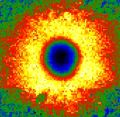Speaker
Description
Metal halide perovskites (MHPs) have garnered significant scientific interest due to their outstanding optoelectronic properties and high efficiencies in solar cell photoconversion. The development of MHPs has relied primarily on solution-based methods as the growth techniques. Although physical vapor deposition (PVD) techniques have been explored less (with the exception of co-evaporation), they present unique advantages in terms of conformal growth and precise control over film uniformity and thickness – factors critical for upscaling and incorporating thin films in heterostructures such as tandem solar cells.
Pulsed laser deposition (PLD), though less common among PVD techniques for solar cells, is noteworthy for its unique ability to deposit complex chemical compositions from a single source in one step. Based on this, PLD provides unique deposition flexibility for investigating a large range of MHP compositions and tune the deposition thickness and rate.
To gain insights into the MHP formation during growth, our research employs in-situ photoluminescence (PL) measurements during the growth of MHP by PLD. Monitoring PL evolution provides insights into the material quality and defect formation processes. We present an analysis of PL evolution during the fabrication of thin films by PLD, with deposition rates ranging from 5 nm/min to 80 nm/min. Our findings reveal a striking similarity in the PL intensity evolution across this range of deposition rates, indicating that the underlying mechanisms of perovskite formation are not significantly altered by the enhanced deposition rate. These findings demonstrate the feasibility of faster deposition rates with PLD, which is a key factor in increasing the throughput of vapor deposited MHPs. Furthermore, we observed that the most pronounced changes in PL intensity occur at the very beginning of the deposition. This early-stage evolution is likely attributable to the coalescence of perovskite grains and the consequent formation of defects at grain boundaries. Beyond a certain film thickness, the PL signatures stabilize and do not exhibit significant variations.
In light of these findings, our future research will focus on investigating the initial stages of perovskite film growth, aiming to control nucleation and grain coalescence processes better. Achieving this precise control will allow the fabrication of high-quality films in shorter times using a vapor deposition technique.

